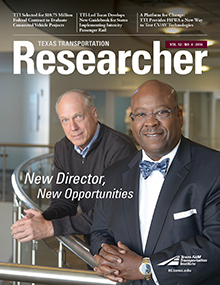All airports have one thing in common: pavement, and a lot of it. In fact, in many cases, maintaining runways represents the largest expenditure at an airport. It’s critical that airport management inspect and maintain its pavements in a timely fashion for safety reasons and to avoid costly, full-pavement rehabilitation projects.

Researchers at the Texas A&M Transportation Institute (TTI) recently completed a project, Pavement Maintenance Guidelines for General Aviation Airport Management, sponsored by the Airport Cooperative Research Program (ACRP) of the Transportation Research Board of the National Academies of Sciences, Engineering and Medicine.
“This project provides tools for general aviation airport managers to go out, walk the pavement, and identify common pavement distresses,” says TTI Pavement Management Program Manager Tom Freeman, who led the project. “General aviation airports are often smaller, with limited staff and resources. The airport managers in many cases do not have experience identifying when there is a pavement problem or what they should do when one occurs. They may wait too late to take action.”
The project yielded four products: a technical report, a field guide for quick reference, a more in-depth guidebook and a website.
“A key to this project was the production of deliverables that could easily be interpreted and used in the field,” notes TTI Research Scientist Jeff Borowiec. “The website and field guide allow users to quickly determine what type of cracking or surface distress they may be looking at.”
One of the features of the website is a cost estimator tool that can be accessed via phone, tablet or desktop computer. If users see a pavement distress, they can identify it using pictures provided on the website. The website takes them through a series of steps to determine the severity of the distress and best repair option. The users are then provided with a cost estimate that can be taken to local officials.
“I like to equate pavement maintenance with maintaining your vehicle,” says Freeman. “If you invest resources into keeping it in good shape, then it will save you costly repairs in the future. We hope the tools we’ve developed in this project assist airport managers in making key decisions.”

